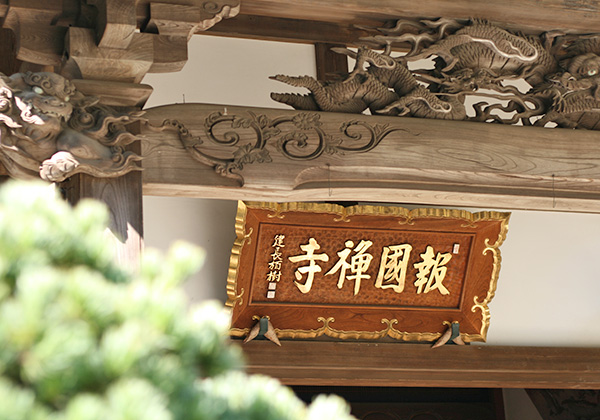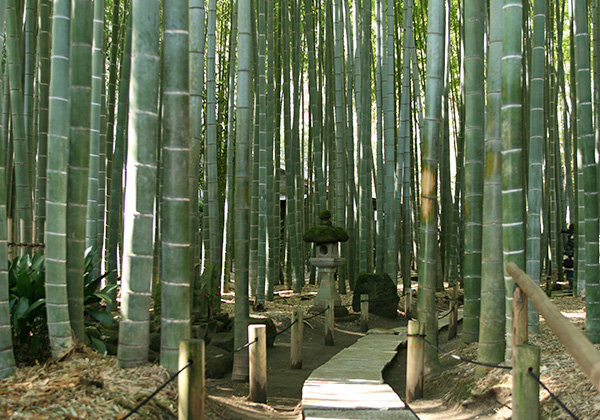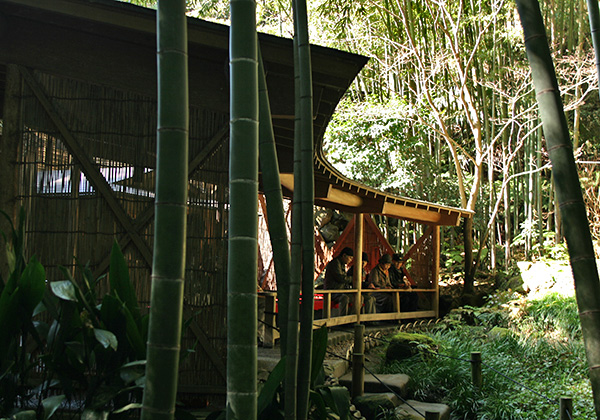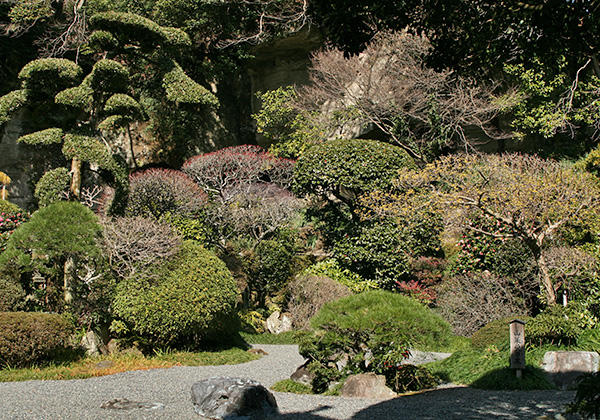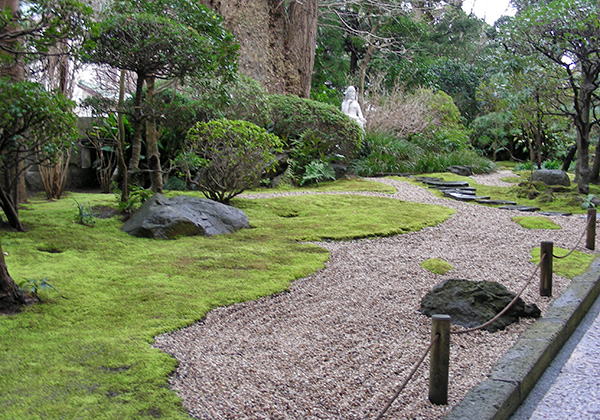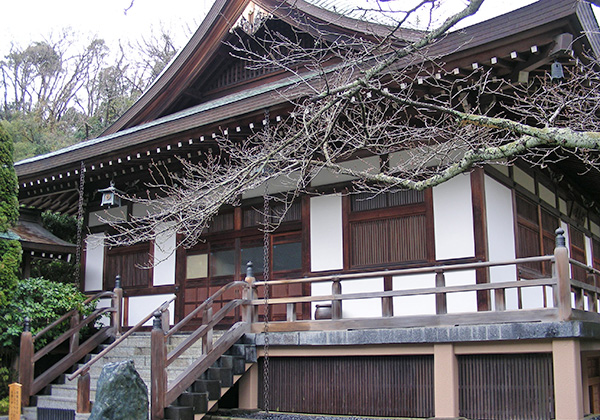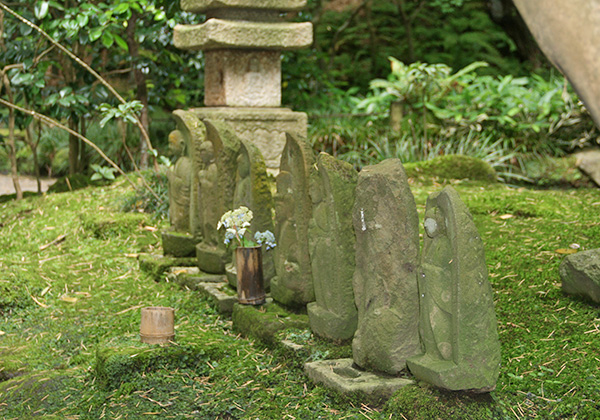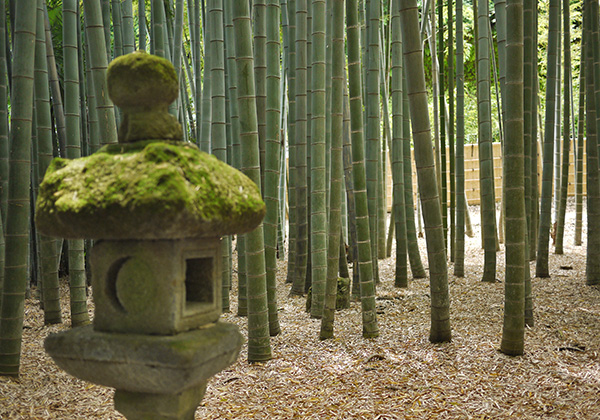Hokokuji
| Official Name | Koshinzan Hokokuji {Pronounced koh-shin-zan hoh-kok-gee} |
|---|---|
| Religious sect | Kenchoji school, Rinzai (Zen) sect, Buddhism |
| Founded | in 1334 by Ietoki Ashikaga {e-eh-toh-kee ah-she-kah-gah} |
| Founding priest | Eko Tengan {eh-koh ten-ghan} |
| Main object of worship | Statue of Shaka Nyorai (Sakyamuni in Sanskrit) |
| Address | 7-4, Jomyoji 2-chome, Kamakura, Kanagawa 248-0003 (show route from current location ) |
| Location | 1,700 meters east of Kamakura Station |
| Time needed to get there | 25 minutes |
| Admission | 400 yen for bamboo garden 1,000 yen for bamboo garden with Green Tea Ticket (L.o. 15:30) |
| Open | 9:00 - 16:00 |
| Phone number | 0467-22-0762 |
| Restrooms | Available |
Historical Overview
This Zen temple is considerably new in Kamakura as it was built in 1334, a year after the Kamakura Shogunate came to an end. The founder, Ietoki Ashikaga (his birth and death years are unknown), was the grandfather of Takauji {tah-kah-woo-gee} Ashikaga, the first Shogun of the Ashikaga regime or the Muromachi Period (1336-1573)
Founding priest Tengan (1273-1335) became a disciple of Priest Sogen Mugaku {so-ghen moo-gah-koo} (1226-1286), the founding priest of Engakuji, at the age of 13. He went to China in 1320 to learn more about Zen and stayed there for nine years. As soon as he returned to Kamakura in 1329, he was enrolled in Jomyoji, another Zen temple. When Ietoki Ashikaga (birth and death years unknown) decided to erect the Temple, Priest Tengan was named as the founding priest.
Hokokuji reminds us of the bloody struggles erupted among the Shogun, governors and vice-governors in the early Muromachi Period. After the collapse of the Hojo regime in 1333, Takauji Ashikaga established the Muromachi Shogunate placing the government office in Muromachi {moo-roh-mah-che} district in Kyoto. (Hence the name of the Muromachi Period). As Kamakura was still an important stronghold in eastern Japan, Takauji appointed his second son Motouji {mo-toh-woo-gee} Ashikaga (1340-1358) as the first governor of Kamakura to control the Kanto (Tokyo and its neighboring prefectures) region. Motouji appointed Noriaki Uesugi {no-re-ah-kee woo-eh-soo-ghe} (1306-1368) as vice-governor, whose ancestor came to Kamakura from Kyoto together with the Sixth Shogun Munetaka {moo-neh-tah-kah}. Thereafter, the two chairs were held by successive members of the two families, during which period, however, both were almost always at odds with each other.
It was in the early 15th century that a Hokokuji-related tragedy broke out. Mochiuji {moh-che-woo-gee} Ashikaga (1398-1439) assumed the fourth governorship at the age of 13 upon death of his father. As Mochiuji did not follow suggestions made by the vice-governor Ujinori {woo-gee-no-re} Uesugi (?-1417) at all, both became hostile to each other to the extent that Ujinori was forced to step down. Mochiuji named Norimoto {nor-re-moh-toh} Uesugi (1392-1418) as a new vice-governor. Though Ujinori and Norimoto were from the same faction, they had not been getting along well with each other, and therefore, Ujinori harbored further hostility toward Mochiuji. At the time in Kyoto, Yoshitsugu {yo-she-tsu-goo} Ashikaga (1394-1418), younger brother of Fourth Shogun Yoshimochi {yo-she-moh-che} Ashikaga (1358-1408), was secretly trying to overthrow the Shogunate in an attempt to take over the seat of the Shogun himself. He sent a message to Mitsutaka {me-tsu-tah-kah} Uesugi, uncle of Mochiuji, and Ujinori in Kamakura urging them to carry out a coup d'etat in Kamakura. Chances were for Mitsutaka to become the governor in replacement of Mochiuji. Both agreed to the Yoshitsugu's secret proposal and they made a surprise attack one night on Mochiuji's residence. Mochiuji was barely able to escape the attack and asked Shogun Yoshitsugu for help. Overthrowing attempt was by no means acceptable to Yoshimochi. He immediately sent his army to Kamakura to kill Mitsutaka and Ujinori. Both were caught in the end and forced to commit harakiri.
Mochiuji was thus able to restore the law and order in Kamakura as a governor. However, he did not go well with new vice-governor Norizane {no-re-zah-neh} Uesugi (1410-1466) either. Back then, children whose age reached 13 were celebrated and given a new name in recognition of coming of age. In most cases, governors' children received one of Chinese character of the Shogun's name. Look at the first names of Shogun in Muromachi Period. How many names start with "Yoshi". In the meantime, when Mochiuji's son reached the age, he named the son "Yoshihisa" without ever consulting with Sixth Shogun Yoshinori (1394-1441) in Kyoto. Mochiuji ignored the traditional practice. Vice Governor Norizane was enraged and left Kamakura in a protest against him for Gun'ma Prefecture where he was the lord of manor. Mochiuji interpreted his action as a revolt and sent army to kill him. However, Shogun Yoshinori in Kyoto sided with Norizane and ordered the Shogunate army to assault the Mochiuji's residence. Mochiuji was no match for the Shogunate. He and his son Yoshihisa had no choice but to kill themselves. Yoshihisa's suicide ritual took place right here at Hokokuji. It was in 1439 and he was only 13 years old. With his death, the Ashikaga governorship in Kamakura ended in tragedy. (Mochiuji performed seppuku at a temple near Zuisenji, which no longer exists.)
Whenever I visit here, the Temple makes me wonder how a 13-year-old boy took his own life and how he felt in the face of death. The Temple lost nearly all of its structures in 1923 due to the Great Kanto Earthquake. Most of the current structures were built after the Earthquake.
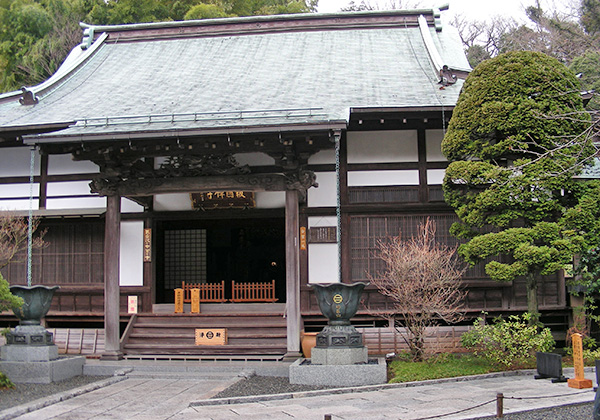
Main Hall
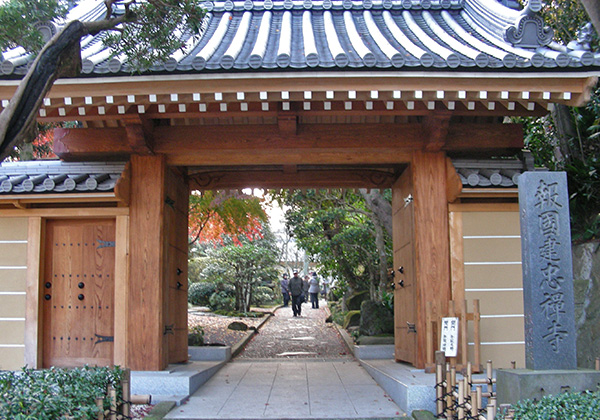
A 50.7 centimeters tall statue of Shaka Nyorai is enshrined as the main object of worship. It was fashioned in the mid-14th century and reflects the Sung style carvings in China. An Important Cultural Asset designated by the Municipal Government of Kamakura. The statue of Sho Kan'non or Arya-avalokitesvara in Skt. ranks tenth of the Kamakura Thirty-Three Kan'non Pilgrimage. The original statue is, however, kept at the Kamakura Museum. Also installed is a sedentary statue of founding priest Eko Tengan carved in 1347, whose posthumous Buddhist name is Butsujo-Zenji {boo-tsu-joe zen-gee}.
